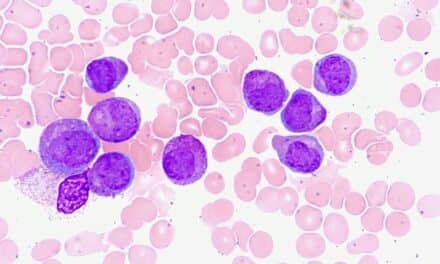PixCell Medical, Yokneam Ilit, Israel, announced that The Journal of Applied Laboratory Medicine (JALM) has published a research paper comparing PixCell’s HemoScreen and its analysis method to standard lab analyzers. Researchers concluded that PixCell’s HemoScreen, a miniature, easy-to-use, AI and machine vision-enabled hematology analyzer, can fill the gap in point-of-care (POC) diagnostics.
The paper, titled A Novel Approach to Hematology Testing at the Point-Of-Care, compares the traditional analysis methods used for blood cell counting to the new imaging flow cytometry method used by the HemoScreen.1 It shows that imaging is superior to the conventional methods by its ability to better differentiate between cells and being more robust in coping with different interferences that are known to affect standard hematology analyzers.
“One of the most common tests that assists in diagnosing infection is a simple complete blood count (CBC). Despite the CBC being the most performed blood test in the world, and one that can immediately inform clinical decision making, it is still mostly restricted to the lab,” says Prof Robert Christenson, PhD, of the University of Maryland, Scientific Advisory Board Member for PixCell and co-author of the study. “Making this test accessible, inexpensive, and accurate at the point of care would significantly improve clinical workflow and stem the spread of disease. We found that the HemoScreen can fill this gap.”
The HemoScreen is designed to be simple for users. It requires no maintenance or calibration, nor any technical expertise to operate. Using the HemoScreen, the entire CBC testing process entails three steps from sample collection to results delivery. A single drop of blood is collected in PixCell’s disposable “lab-on-a-cartridge,” which is outfitted with all necessary reagents. The cartridge is inserted into the HemoScreen, and within 6 minutes, the device provides lab-accurate results for the full 5-part differential CBC, including 20 parameters and comprehensive abnormal cell flagging.
“The CBC is extensively used to manage covid-19 patients’ disease progression and clinical decision-making, such as transfer to ICU, intubation and patient antibiotic regimes. Yet, there is currently no suitable POC option for this most common test,” says PixCell Medical CEO and co-author of the study, Avishay Bransky, PhD. “The HemoScreen is the first established and FDA-cleared hematology analyzer for POC use by non-technical users. This study demonstrates that the HemoScreen can deliver lab-equivalent results rapidly, at the point of care, making it the ideal solution to improve workflow. This can minimize the spread of disease, particularly in the pandemic management reality in which we currently find ourselves.”
The HemoScreen leverages AI and computer vision, combined with PixCell’s patented Viscoelastic Focusing (VEF) technology, which causes cells to line up in a single cell plane for rapid analysis and can be utilized in primary care, oncology, intensive care units, operating rooms, and emergency departments.
For more information, visit PixCell Medical.
Featured image: PixCell Medical HemoScreen cartridge insertion. (Courtesy: PIxCell Medical)
Reference
- Bransky A, Larsson A, Aardal E, Ben-Yosef Y, Christenson RH. A Novel Approach to Hematology Testing at the Point of Care [published online ahead of print, 2020 Dec 4]. J Appl Lab Med. 2020;jfaa186. doi:10.1093/jalm/jfaa186





